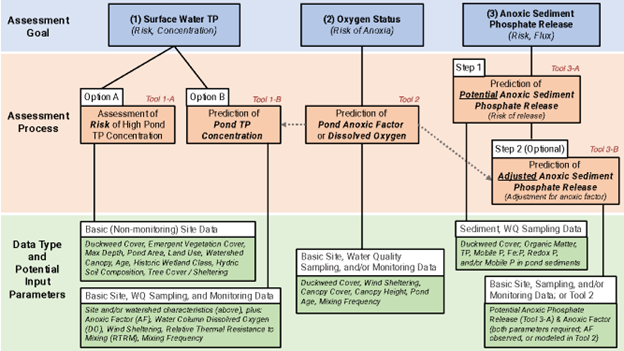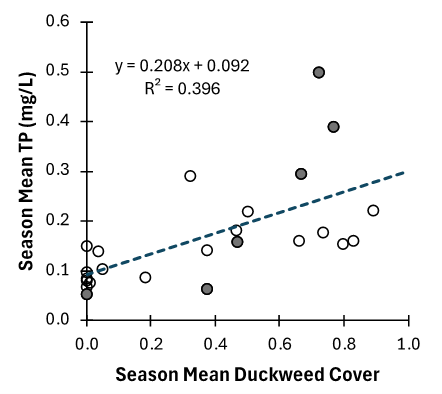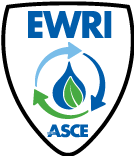The Challenge
Ponds are used for stormwater management throughout the world, providing the crucial function of runoff detention and removal of particles and associated nutrients such as phosphorus (P) and other pollutants, mitigating risks of eutrophication of receiving water. As many stormwater ponds are now decades old, their treatment performance may be degraded from accumulating organic matter and encroachment of vegetation, leading to low dissolved oxygen (DO) and sedimentary P release. It has recently been discovered that many stormwater ponds are stratified (McEnroe et al. 2013; Chen et al. 2019; Taguchi et al. 2020; Holgerson et al. 2022; Loewen and Jackson 2023), negating the assumption that ponds, being shallow, are always well-mixed (Walker 1987). Thus, they are like a small lake that is always in the sheltered zone, with a hypolimnion and associated DO and internal P loading concerns (Taguchi et al. 2020). Assessment of pond performance to evaluate the status of existing ponds is needed to determine if management and maintenance could improve function but comprehensive monitoring of stormwater inflows and outflows is expensive, time-consuming, and not a practical option for most watershed managers given the large number of ponds in many cities. Therefore, a substantial need exists to assess the P removal performance of the numerous stormwater ponds in a relatively robust, straightforward, and inexpensive manner.
Development of the Tool
To this end, the Minnesota Local Road Research Board (LRRB) and the Minnesota Stormwater Research Council (MSRC) funded projects at the St. Anthony Falls Laboratory, University of Minnesota, to develop a spreadsheet-based Pond Assessment Tool (Janke et al. 2023; Natarajan et al. 2025), built on the results of several years of intensive data collection (water chemistry, sediment phosphorus release, development and aggregation of supporting datasets) through multiple research projects funded by the MSRC, LRRB, and others. We have developed an understanding of pond and landscape factors (“risk indicators”) that are strongly associated with high surface water P concentrations and with anoxic sediment P release in ponds treating stormwater. The tool (Figure 1) predicts water column total phosphorus (TP) concentrations and sediment P release rates using regression equations, such as given in Figure 2, and includes capacity to predict pond oxygen status (extent of anoxia), a parameter specifically important for sediment P release. The tool also provides simpler assessment methods relying on classifying levels of risk indicators, i.e., factors such as floating and emergent plant coverage, surrounding soil and land use, and tree canopy cover, which are derived from readily available spatial data, aerial photos, pond drawings, or direct observation, but that do not require extensive sample collection or analysis.

Example relationships in the Pond Assessment Tool (Figure 2):


Application
The Pond Assessment Tool was developed for stormwater practitioners. The tool supports assessment of many ponds quickly, with results intended to inform monitoring or maintenance strategies for pond P management, and early versions of the tool have been well-received by potential users, consisting of department of transportation staff as well as city, county and consulting staff scientists and engineers. The tool is developed to be easily updated and expanded to realize its potential as a robust and useful screening and assessment method for identifying stormwater ponds in need of further study, maintenance, or other management, especially for phosphorus. Future versions of the tool could be adapted to incorporate new information and predictive relationships and address hydrologic functions, other pollutants in stormwater, and impacts of retrofits or design practices (e.g., weir skimmers, sand filter benches).
References
Contact EWRI for information on references.


